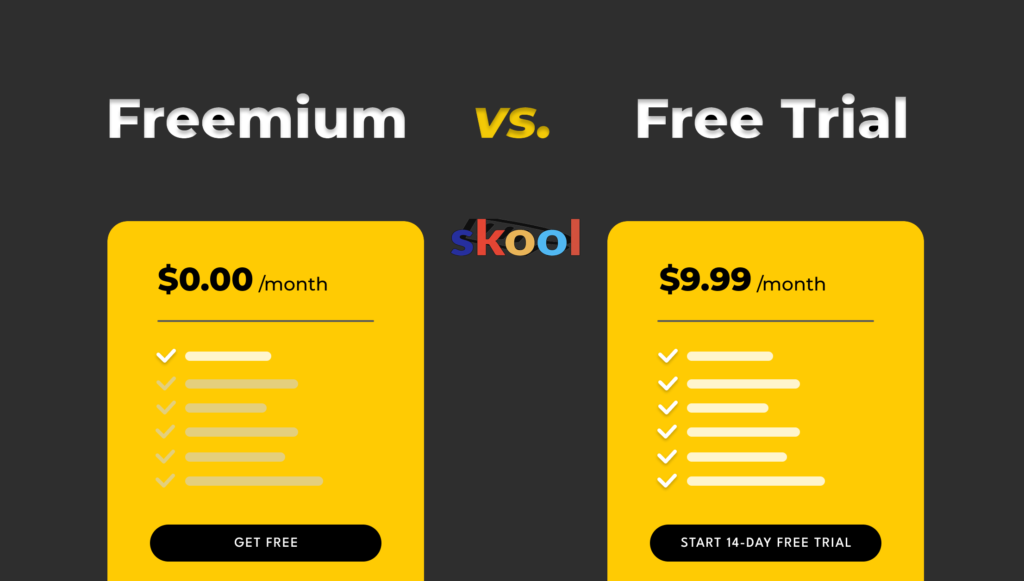Building a thriving online community for learning, like a Skool community, hinges on attracting and retaining engaged members. A key factor in achieving this is your pricing strategy. Two prevalent models dominate the online learning landscape: Freemium and Paid. But which one is right for your Skool community?

This article dives into the pros and cons of both Freemium and Paid models, helping you decide which approach fosters a vibrant and successful learning environment for your Skool community.
The Power of Choice: Freemium and Paid models offer distinct advantages for your Skool community. Let’s delve deeper into each:
Freemium: A Wide Net for Learners
- Pros:
- Large User Base: Freemium attracts a broader audience, allowing you to showcase your expertise and establish your Skool as a learning hub.
- Low Barrier to Entry: Free access removes financial hurdles, encouraging casual learners and potential paying members to explore your content.
- Community Building: A larger user base fosters interactions, discussions, and a sense of community, potentially leading to organic growth.
- Cons:
- Monetization Challenges: Converting free users to paying members can be difficult. You’ll need a strong strategy to highlight the value proposition of paid features.
- Content Dilution: Providing substantial value for free might limit the incentive to pay. Finding the right balance between free and paid content is crucial.
- Engagement Levels: Free users might be less dedicated, impacting overall community engagement. Consider strategies to incentivize active participation from all members.
Paid: Focused Learning and Revenue
- Pros:
- Sustainable Revenue: Paid models provide a direct income stream to support content creation, platform maintenance, and potential growth.
- High-Value Content: The focus shifts to creating exclusive, in-depth content, attracting serious learners willing to invest in their education.
- Increased Engagement: Paying members are typically more dedicated, leading to higher engagement and a more focused learning environment.
- Cons:
- Limited Reach: Paid access restricts your audience to those willing to invest, potentially hindering community growth.
- Marketing Efforts: You may need to invest more in marketing to attract paying members and convince them of the value proposition.
- Loss of Casual Learners: Excluding free content might deter curious learners who could potentially become paying members later.
Choosing the Right Model:
- Content Focus: If your content is broad and introductory, Freemium might work well. Deep, specialized content is better suited for a Paid model.
- Community Goals: Do you prioritize a large, interactive community or a focused group of dedicated learners?
- Resource Investment: Freemium requires strong conversion strategies, while Paid models might require more marketing effort.
Beyond the Model:
Regardless of your choice, consider these additional elements:
- Freemium: Offer high-quality free content, create tiered subscriptions with increasing value, and leverage community features to encourage engagement.
- Paid: Provide exceptional value for the price, offer flexible subscription options, and foster a supportive environment for paying members.
Conclusion:
Ultimately, the best model depends on your Skool community’s unique needs and goals. Carefully consider your content, audience, and resources before choosing your pricing strategy. By understanding the strengths and weaknesses of Freemium and Paid models, you can create a thriving online learning environment that fosters engaged learners and a successful Skool community.
